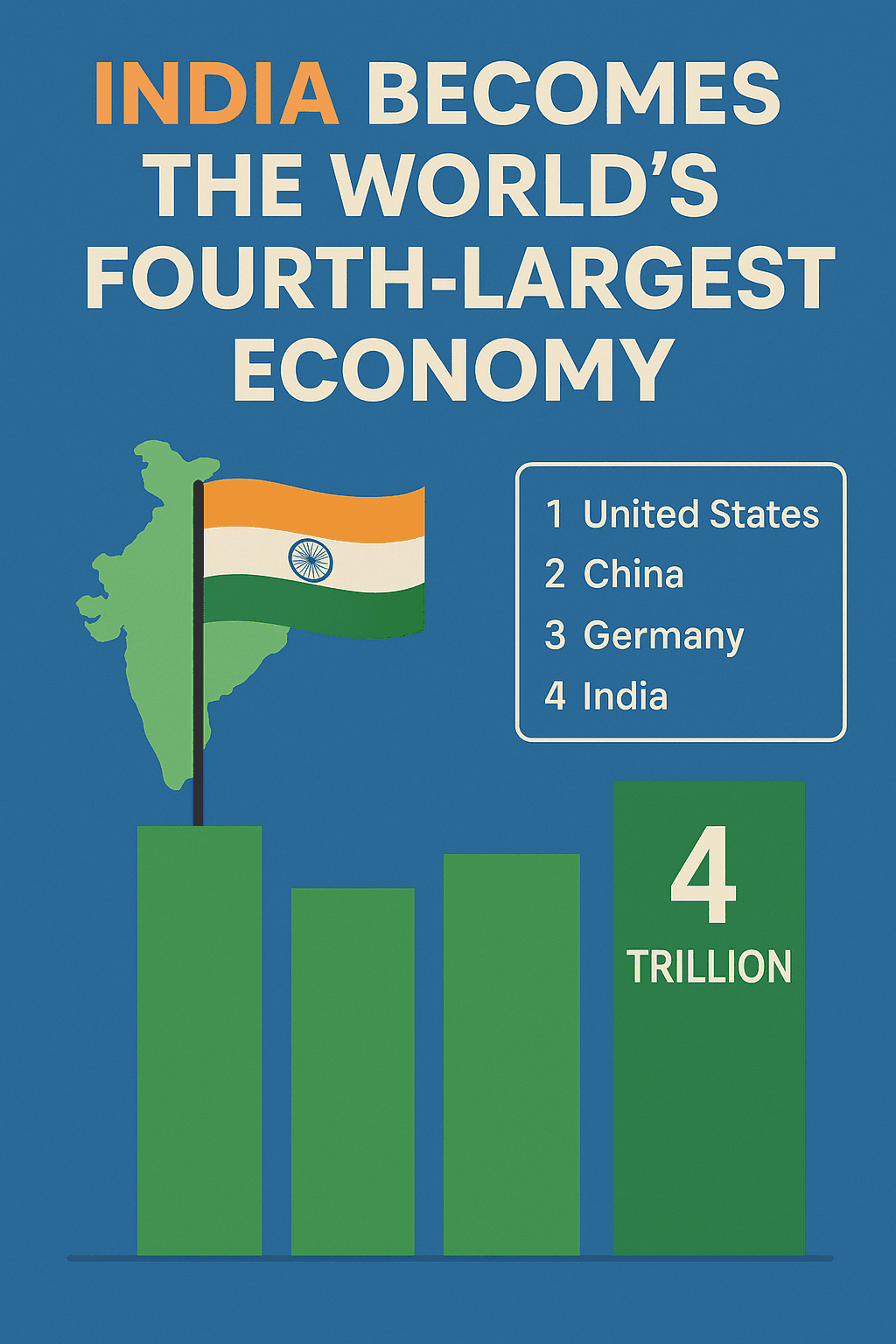
In a remarkable achievement that underscores India’s rapid economic rise, the country has officially surpassed Japan to become the fourth-largest economy in the world. This milestone, confirmed by the International Monetary Fund (IMF), marks a new chapter in India’s journey on the global economic stage.
India’s Nominal GDP Hits $4 Trillion
According to the latest IMF data, India’s nominal Gross Domestic Product (GDP) has reached an impressive $4 trillion, pushing it ahead of Japan, which had long held the fourth spot. This places India just behind the United States, China, and Germany in terms of overall economic size.
The announcement was made by B V R Subrahmanyam, CEO of NITI Aayog, during the 10th Governing Council meeting. He expressed optimism about India’s future growth, suggesting that if current trends continue, the country could rise even further to become the third-largest economy within the next two to three years.
What’s Driving This Growth?
India’s rapid economic expansion is fueled by several key factors:
- Strong Economic Growth Projections: The IMF forecasts that India’s economy will grow by 6.2% in 2025 and 6.3% in 2026, maintaining its position as the world’s fastest-growing major economy.
- Favorable Global Environment: India benefits from a stable geopolitical and economic landscape, making it an attractive destination for investment.
- Cost-Effective Manufacturing: India’s competitive manufacturing sector, supported by initiatives like “Make in India,” continues to draw global manufacturers and investors seeking affordable production hubs.
- Government Initiatives: Policies aimed at boosting infrastructure, digitization, and ease of doing business have significantly enhanced the economic environment.
What Does This Mean for India and the World?
This landmark achievement not only highlights India’s growing economic power but also signals its increasing influence in global affairs. Being the fourth-largest economy opens up new opportunities for India in trade, diplomacy, and international cooperation.
For Indian citizens, this economic growth can translate into more jobs, improved infrastructure, and higher living standards over time. For the world, it means greater partnership opportunities with a nation that is rapidly becoming an innovation and manufacturing powerhouse.
Looking Ahead: The Path to Becoming the Third Largest Economy
While surpassing Japan is a historic feat, the journey is far from over. India aims to climb further and join the ranks of the top three global economies. With the right mix of policy reforms, investment in technology, and continued economic stability, this goal is within reach.
Analysts suggest that sustained growth will depend on addressing challenges like income inequality, improving education and healthcare, and continuing to attract foreign investment.
Final Thoughts
India’s rise to the fourth-largest economy is a testament to decades of hard work, reform, and resilience. It sends a clear message to the world that India is no longer just an emerging market — it is a major economic force shaping the future of the global economy.
Stay tuned as India continues its journey of growth, innovation, and leadership on the world stage!





